ODM / OEM Accept Printing On Fabric
Design and fabric sourcing, quality control, inspection, after-sales service, etc. Each production step ensures that our customers have no worries.
100+ Fabrics
Cotton.Polyester.Linen.Silk
1-2 Days Production
Quick turnaround & express delivery
No Minimum
Quantity & wholesale discounts available
Newest Technology
High quality prints & environmentally friendly
-
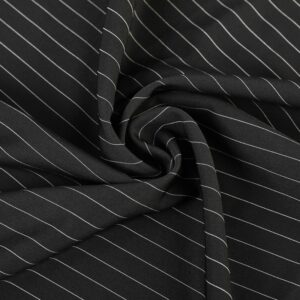
100D Twill Stripe Four Sides Elastic White Stripe Color Woven Stripe Men’s Shirt Fabrics
Read more -
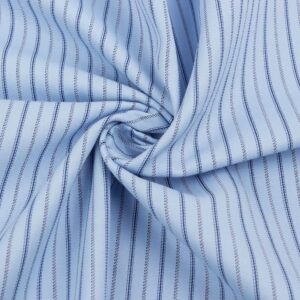
fashion men’s new satin stripe pattern shirt fabric soft breathable dress fabrics
Read more -
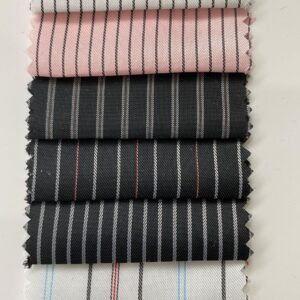
Polyester color woven striped fabric color woven fabric vertical striped fabric
Read more -
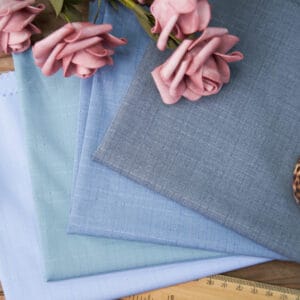
Bamboo Fiber Superfine Denier Shirt Fabric Non-iron
Read more -
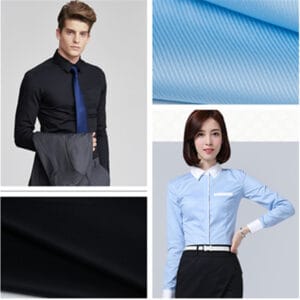
60%Cotton 40%Polyester Blend Vegetarian Easy Iron Cavalry Twill Shirt Fabrics
Read more -
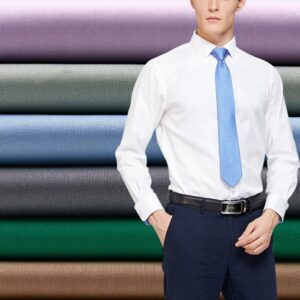
60S Cotton Brocade Fine Twill Stretch Fabric
Read more -
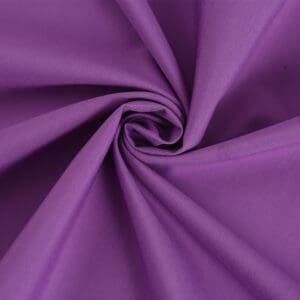
Plain Shirt Fabric Arabian Robe Fabric Men’s and Women’s Shirt Fabrics
Read more -
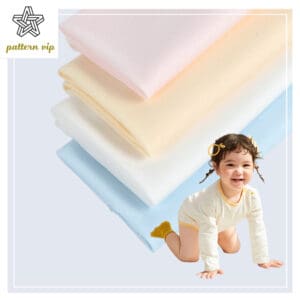
Cotton Bamboo Knit 130g Plain Wave Jersey for Babywear
Read more -
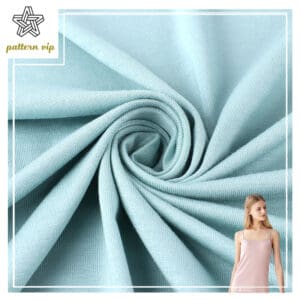
40S Modal Viscose Spandex Knit Jersey
Read more -

EcoLuxe Bamboo-Cotton 170 GSM Single Jersey Fabric
Read more -
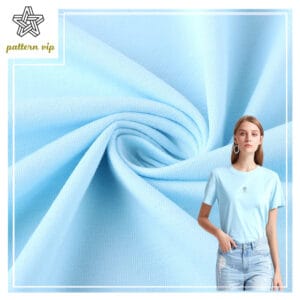
UrbanComfort 32S Cotton Jersey Fabric for Fashion Wear
Read more -
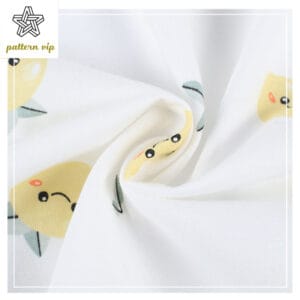
BabySoft 32S Cotton Jersey Baby Wear
Read more -

80% Nylon 20% spandex swimwear Solid 200 gsm
Read more -

82% Nylon 18% spandex swimwear Solid180 gsm
Read more -

94% Nylon 6% Cotton Fabric 85 gsm
Read more -

55%viscose 18% rayon 18% tencel 9% linen Fabric
Read more
Be Careful When Choosing A New Fabric Supplier, The DISAPPOINTMENT of low quality lasts much longer than the Joy of LOW PRICE!
Practical Technology of Print Fabric
Floral Fabric Overview
Print fabric is a type of textile that has been printed with designs, patterns, or images. It is used to create apparel, homewear, and other items. Print fabric can be made from a variety of materials such as cotton, silk, wool, and polyester. It is a popular choice for creating unique pieces of clothing or home accessories because it offers an array of colors and patterns that can be used to create interesting designs. Print fabric is also very durable and long-lasting which makes it a great choice for creating garments that will stand the test of time.

Factors You Should Considering While Choose Suitable Fabric
Cuttable width
The cuttable width of a fabric can have a significant impact on how a garment looks and fits. A fabric with a wider cuttable width will allow for a larger amount of fabric to be cut, resulting in larger pieces and a more relaxed fit. A fabric with a narrower cuttable width would result in smaller pieces and a more fitted appearance. Additionally, the width of the fabric can affect the ability to create precise pleats and other details on a garment.
Pattern type
is that it can give a garment a unique look and feel. Different patterns can affect the way a fabric looks, such as a floral pattern creating a more feminine and romantic look. Additionally, pattern can affect how a fabric flows and drapes, as some patterns may be more stiff or thick, while others may be more lightweight and flowing.
Softness and Stiffness
as soft fabrics tend to drape better and make more comfortable garments, while stiff fabrics such as linen and twill can create a more structured look.
Thickness and drape
can also affect the way a garment looks, as different fabrics can create different silhouettes. Heavier fabrics such as denim and canvas can create a more structured look, while lighter fabrics such as chiffon and silk can create a more relaxed and flowy look.
The weight of the fabric can also affect the garment’s look, as heavier fabrics can create a more substantial look while lighter fabrics can create a more airy and delicate look.
Fabric Surface style
Plain fabric
This is one of the most commonly used fabric styles, can be printed, dyed, and very time to do post-processing, such as pleating, foil stamping, scattering pieces, etc.
Twill fabric
More used in woven fabrics, mostly used in plain fabrics, also a kind of texture
Ribbed fabric
There are more knitted fabrics, the common ones are 1*1, 2*2, etc.
Satin fabric
This kind of fabric is used for party, or gift and other clothing style, because the luster of the fabric surface, so that the whole clothing style can present a kind of luxury taste
Cost control
Fabric cost control is an essential part of the success of any clothing production company. It is important to have cost control in place in order to ensure that the company is able to produce garments cost-effectively and within budget. Without proper fabric cost control, a clothing production company may find themselves overspending on materials and unable to compete with other companies in their industry. Additionally, having cost control in place can help the company to ensure that they are using the right types of fabrics for their particular garments, as well as being able to source fabrics that are of the highest quality.
Fabric compatibility issues
Fabric compatibility issues are an important factor for garment manufacturing companies to consider. Designers need to know which fabrics are compatible with each other and how each fabric reacts to various treatments or processes. For example, fabrics do not blend with other fabrics, making it difficult to make garments. Furthermore, when light organza goes with heavy satin fabric, the organza should be positioned well before sewing the piece to prevent slippage, otherwise it is easy to have splicing problems
company may find themselves overspending on materials and unable to compete with other companies in their industry. Additionally, having cost control in place can help the company to ensure that they are using the right types of fabrics for their particular garments, as well as being able to source fabrics that are of the highest quality.
Some Standards To Chose One Trusted Fabric Supplier
Responsible for Quality Issues
I have previously encountered the market to buy spot, turn the order inside the order, the width of the door to be shorter than the first order of 5 cm, you know, the difference between the width of the fabric more than 3 cm, in fact, has been substandard. Specifically, you can look at the following American Standard four-point system introduction
Production Capability
Garment mabufacturing generally need about 1 week to finish bulk order more than 10K pieces, then the custom fabric side, if amount only1K 2K meters, the delivery is very easy to control , if the order quantity is about is 1 high container, which requires a relatively large formal factory to cooperate, to avoid delivery delays that cause clothing miss the best season of sales finally
Good Communication
The fabric processing process can be up to dozens of kinds, any link of miscommunication, may finally receive the fabric is not qualified, and buyers and suppliers are a lot of cross-border communication, which requires a very professional industry knowledge, can understand and solve the customer’s needs instantly, otherwise back and forth to modify the sample, is also a very time-consuming behavior
After Sales Service
Although most fabric suppliers in China will say that their fabric is qualitied , however the most authority comes from the garment manufacturer. When the fabric is opened on the big flat table, even the smallest problem can be obviously seen, so this is the time for the after-sales service of the fabric supplier. A good fabric supplier can immediately propose a plan when there is a quality problem with the fabric, arrange to return the container or replenish the goods in time to meet the back-end demand
Payment Support
The supplier is very friendly with the payment method, which can make you less worries, such as Bangladesh is used to do LC, then the supplier only running TT, the preliminary more communication is meaningless
And many customers have been used to the operation mode with the local banks, as a new supplier, is to solve the needs of customers, and should not be in the payment method above, so that customers spend too much time and energy
Industry And Product Expertise
There is a foresight to the unpredictable trend of the apparel industry, such as the sustainable development in 2010, so that the recycled fabric garments occupy a wave of market dividends. Furthermore, most of the garment brands require 3 levels of color fastness, while some medium and high-end brands require 4-4.5 levels of color fastness, no matter it is dark or light color.and related to this, there are some fabric quality control requirements, such as shein pay more attention to bulk delivery time
Empathy, Or Cultural Adaptability
Empathy and cultural adaptability are important for choosing fabric suppliers. In order for a company to be successful in sourcing fabrics for their garments, they must be aware and mindful of the culture of the suppliers they are working with. Understanding the language, customs, and expectations of the supplier can help to ensure that the company’s expectations are met and the fabric quality is up to standard. Additionally, being culturally aware and empathetic can help to build strong and lasting relationships with suppliers, thus increasing the likelihood of successful collaboration
Cooperation With Third Party QC
Cooperation with third-party quality control (QC) is essential when choosing a fabric supplier. An independent, third-party QC can provide valuable insight into the quality of the supplier’s fabrics and ensure that the company is getting the best product for the best price. A third-party QC should be brought in during the selection process to ensure that the fabric is of the highest quality and meets the company’s standards. Additionally, the third-party QC can provide important feedback on the supplier’s customer service and the turnaround time of orders. This feedback can be invaluable in helping to ensure that the company is working with the right supplier.
Compliance
The supplier must comply with all relevant regulations, including those of the country of origin, as well as industry standards and any specific requirements of the customer. Additionally, the supplier must be able to provide certifications and documentation to support the quality of their fabrics. Compliance with safety and environmental regulations is also important. It is essential that the supplier meets all applicable requirements to ensure the health and safety of the customer and their employees.
Detailed Records Of Order Follow-Up
This helps to ensure that orders are being fulfilled on time and that all necessary information is being gathered. Records should include details such as the date of order, the date of delivery, any changes to the order, and any specific requirements. This information can then be used to evaluate the supplier’s performance and to ensure that the customer’s expectations are being met. Detailed records help to maintain relationships between the supplier and the customer, which is essential for a successful business partnership.
Motivated And Positive Work Attitude, Used For Innovation
It is important to ensure that the supplier is reliable and can provide quality materials. An individual with a positive attitude will be willing to work collaboratively to ensure that customers’ needs are met and that fabrics are delivered on time. Additionally, having a positive attitude encourages innovation, which is important in order to identify new opportunities and keep the supplier competitive. A motivated and positive attitude is essential to ensure success in the fabric supplier selection process.
Common Fabric Be Used For Apparel
Cotton
Cotton fabric is a natural fiber material made from the cotton plant. It is soft, breathable, and durable, and is often used in clothing, home furnishings, and other products. Cotton fabric is often blended with other fibers to create a fabric with desired characteristics.
Polyester
a synthetic material made from a combination of plastic and other semi-natural fibers. It is strong, resistant to wrinkling and shrinking, and is often used in clothing, home furnishings, and other products. Polyester fabric is often blended with other fibers to create a fabric with desired characteristics.
Acetate
a type of fabric made from cellulose, a natural polymer derived from wood pulp. It is light, soft, and drapes well, and is often used in apparel, draperies, and linings. Acetate is also known for its breathability and resistance to shrinking, fading, and wrinkles.
Rayon / Viscose
a type of synthetic fabric made from a combination of cellulose and other synthetic materials. It has a soft, silky feel and is often used to make lightweight, wrinkle-resistant garments. It is also known for its breathability and resistance to shrinking, fading, and wrinkles.
Hemp
Hemp fabric made from the fibres of the hemp plant. It is a strong, durable fabric that is breathable and absorbent, making it a great choice for a variety of applications. Hemp fabric is ideal for clothing, home furnishings, and accessories, and is often used as a sustainable alternative to other fabrics.
Lycra
Lycra is a brand name for a type of synthetic fabric known as spandex. It is a lightweight, stretchy fabric that is commonly used to make form-fitting clothing such as swimwear, activewear, and lingerie. Lycra is highly durable and resistant to stretching and bagging, making it a great choice for clothing that needs to keep its shape. It is also very comfortable and breathable, making it a popular choice for athletic wear and casual clothing.
Nylon
Nylon is a synthetic fabric that is lightweight and durable, making it a great choice for outdoor clothing, athletic wear, and other items that require strength and flexibility. Nylon is also known for its excellent water and wind resistance, making it a great choice for jackets and other items that need to be protected from the elements. Nylon is also highly resistant to wrinkles and fading, making it a great choice for clothing that needs to look good over time.
Jesery
Jersey fabric is a type of knit fabric that is usually made from cotton or synthetic fibers. It is lightweight and stretches easily, making it ideal for clothing like t-shirts, dresses, and skirts. The fabric is also breathable and absorbent, making it a great choice for activewear. Jersey fabric is also known for its soft texture, which makes it comfortable to wear. It is also easy to sew, making it a great choice for projects that require intricate details.
Canvas
Canvas fabric is a heavy-duty woven fabric made from cotton, linen, or a combination of both. It is typically used for making tents, sails, and awnings, as well as for upholstery. Canvas fabric is strong and durable, and it can be treated with wax or other agents to make it more water-resistant. It is also breathable, making it a great choice for outdoor apparel and bags.
How To Determine A Qualified Fabric
Several Fabric Inspection Standards In The Industry
Four-Point System
The 4 point system for fabric checking is a system used to evaluate the quality of a fabric before it is used in garment production. The system consists of four categories: appearance, handle, weight, and construction. In appearance, the fabric should be checked for color consistency and any defects such as spots or stains. Handle refers to the feel of the fabric when touched, and should be checked for softness and resilience. Weight is the measure of the fabric’s thickness and should be compared to a standard measurement. Finally, construction refers to the weave, knit, or other type of fabric and should be checked for any irregularities.
GB Standard
- 1.GB/T 22852-2009
- 2.GB/T 22970-2010
- 3.GB/T 31007.1-2014
- 4.GB/T 31007.4-2014
- 5.GB/T 31007.2-2014
Main Testing Items
Shrinkage
- 1.Washing program
- 2.Washing temperature
- 3.Drying procedure
- 4.Treatment after laundry
Special Finishing
- 1.Flatness.
- 2.Waterproof performance test
- 3.Oil-proof performance test
- 4.Formaldehyde content test
PH Value Test
The PH value test in fabric is a test used to measure the acidity or alkalinity of a fabric. It is done by immersing a sample of the fabric into a solution of a specific PH value. The sample is then tested for its acidity or alkalinity. The results of the test are then compared to a reference standard to determine the exact PH value of the fabric.
Color Fastness Test
- 1.Washing fastness
- 2.friction fastness
- 3.perspiration fastness
- 4.sun fastness
- 5.water fastness
- 6.non-chlorine bleaching fastness
- 7.chlorine bleaching fastness
- 8.dry cleaning fastness
Ask for quotation
Just leave your name, email, and simple message or requirements, We will contact you within 1 hour.
Wechat ID: +86 13675780407
Email:[email protected]


